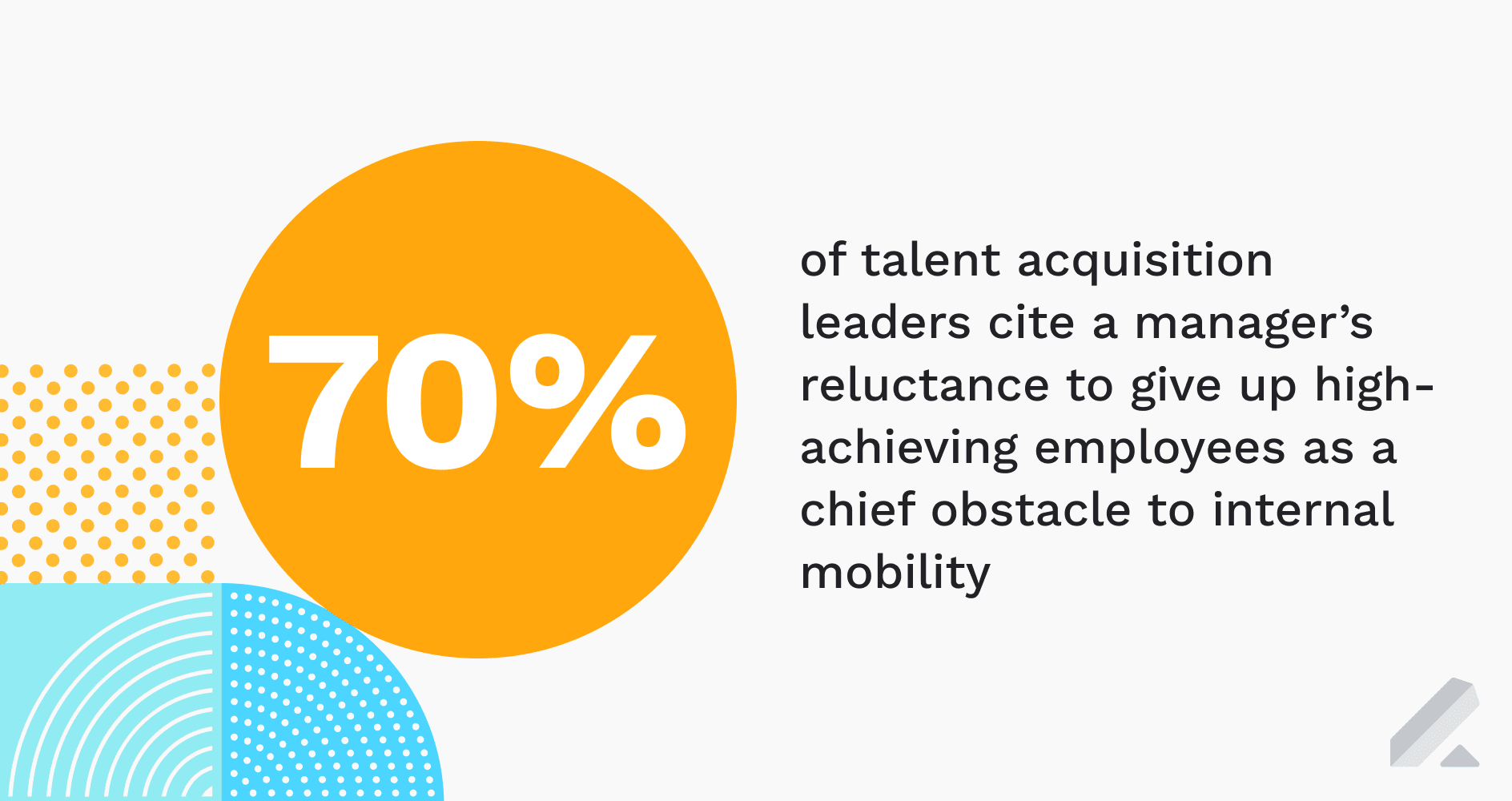Creating an internal mobility strategy that drives talent forward is vital for businesses today.
Before jumping into recruiting for open or new roles internally, it’s critical that your hiring team and managers have a strategy or framework in place to execute internal mobility effectively and to the benefit of both your people and your organization. But how do you put together a strategy that drives internal mobility?
Building your internal mobility strategy
Let’s take a look at how you can develop your strategy (and a few of the best practices to help along the way).
Consider the future potential of employees when sourcing candidates with career agility
While internal mobility is about internal employees, if you’re hiring from outside of your company, it helps to consider the future potential and mobility of the candidates you source by hiring with career agility in mind.
Career agility refers to an employee’s ability to adapt to changing business landscapes thanks to their transferrable skills. Hiring for career agility can help increase the likelihood you’ll be able to fill skill gaps or open roles in the future without having to hire externally again.

Create a framework for internal mobility in your organization
Internal mobility is more than promotions or pay raises. But without a framework in place, it can be tempting to default to titles and compensation as a form of “mobility”.
Instead, you’ll need to have a framework for how and where you’ll move employees in specific roles, the types of projects you can move them onto, and how those internal movements will impact or fit with your workplace and growth plans.
Craft career paths (or “tracks’”) for your employees
Employees and candidates expect that their organizations will have some sort of plan, or track, in place to help them develop and move either vertically or laterally in the company.
But it’s not uncommon for these career paths to fall to the wayside.
If you’re hoping to leverage internal mobility, you’ll need to have dedicated career paths or ‘tracks’ for employees so they can upskill, try new roles or teams, and have opportunities to work on different projects as they progress in your organization.

Leverage 1:1 meetings and performance reviews
Managers glean many insights from 1:1 meetings, performance reviews, and employee feedback.
Using these insights to help you determine which opportunities employees want to pursue, or how their skills and interests are progressing, is a simple yet highly effective way to move team members onto the right projects, or offer them the chances they want to take on leading a team, trying out a new role, or even shadowing another department.
Focus on leadership development
Many of your employees have or want to develop the skills needed for leadership, whether it’s a CMO role or a manager of an existing team. An internal mobility strategy doesn’t just encompass vertical movement, but lateral as well.
So, it’s vital to factor in leadership development — which necessitates upskilling and exposure to different parts and aspects of your business. LinkedIn found that a top priority for many companies is workforce reskilling, and that can be applied to leadership skills, too.
Understand how you’ll adapt to shifts in company culture
Creating a culture where internal mobility is a cornerstone of employee experience, engagement, and retention means having the right plan in place to adapt to shifts in that culture.
For example, 70% of talent acquisition leaders cite a manager’s reluctance to give up high-achieving employees as a chief obstacle to internal mobility. This can cause shifts in a culture from an open, collaborative one to culture where skills and knowledge are gate-kept.
It’s critical that you have a plan to mitigate any challenges where your culture is negatively impacted by barriers or opposition to internal mobility.
Make learning and development programs more accessible
If the pandemic taught us anything, it’s that democratizing learning and development is becoming commonplace, allowing employees and managers alike to actively participate in skill-sharing and talent-building.
It’s why 36% of companies are encouraging vertical, lateral, and rotating job opportunities within their own teams, per Mercer.
Making learning and skill-sharing more accessible benefits your entire organization, from exposure to mentoring and coaching to giving people at every level the opportunity to learn and grow. Think of it as the democratization of learning.
4 internal mobility best practices to guide your strategy
1) Build a culture that encourages internal mobility
When your company culture is set up to encourage and support internal mobility, you create an environment where continuous learning and development becomes core to the health and success of your organization (think: the democratization of learning).
Not only that, but you champion the engagement and retention of talent that wants to stay. When 94% of employees choose to remain with companies that invest in their careers, it’s a no-brainer to start where your people thrive—your culture.
A culture that encourages internal mobility supports:
- Upskilling or workforce reskilling
- Autonomous career paths or tracks
- Career and leadership development
- Learning and growth initiatives
- Knowledge, skill, and resource sharing

2) Audit your team’s existing skill sets
Whether you have 10, 100, or 1,000 employees, you likely don’t know every skill your employees have. Internal mobility is only possible if you know what each of your team members is capable of and the skills they have (including ones they may not be using every day for their role).
Ideally, you’ll have audited each employee’s skill set during the recruiting stage, but it’s helpful to track these skills for future mobility.
Just 18% of employees feel their employers understand their skills, interests, and skill gaps.
If you know, for example, that a new hire on your marketing team also has demand generation or public relations skills, track it. This can benefit any internal mobility available for that hire down the road.
3) Create an internal talent marketplace or ecosystem
Typically, when there’s a role to fill or a new position to hire for, we turn to external recruitment to source candidates. But what if we didn’t have to do that for every role?
This is where a talent marketplace or ecosystem comes into play.
Start by looking at your current and future needs, along with any obvious skill gaps, then create an internal system where opportunities for mobility, new roles, or even new projects can be shared with your teams.
Managers can collaborate on choosing the right employees for each project while understanding where and how learning happens. Think of this as an internal job board or job site, but for every opportunity you can provide your people.
4. Prepare for reskilling
Reskilling happens when employees learn new skills to move into a new role at their company. For example, a content marketer may feel want to learn code to join the UX/UI team.
The benefits of reskilling are numerous, but chief among them is the ability to create internal talent pools while adopting role flexibility and developing existing talent.
A Mercer study shows reskilling is becoming the top talent activity most likely to drive business results and impact from an HR and talent acquisition perspective. Ensuring you’re prepared to help employees reskill will help future-proof your organization.
Future-proof your organization with an internal mobility strategy that helps you train and retain employees
In a world where the competition for talent is fierce, leveraging the star employees you already have, and focusing on the future potential of candidates, can help both your recruiting team and organization at large adapt to the demands and realities of hiring today.
Our complete guide to internal mobility empowers recruiters with everything they need to know to drive internal mobility. Get your free copy of our guide below.



